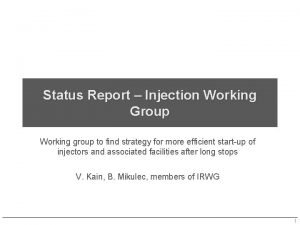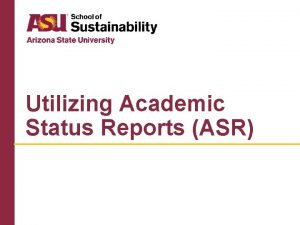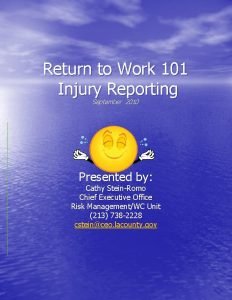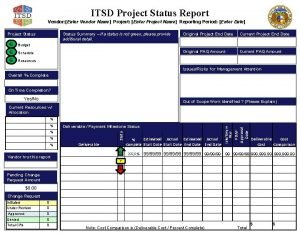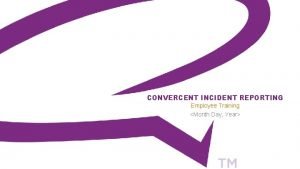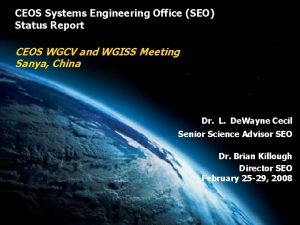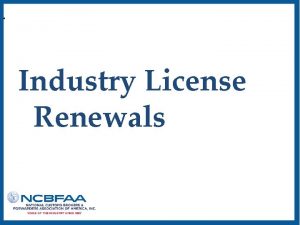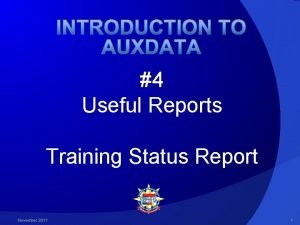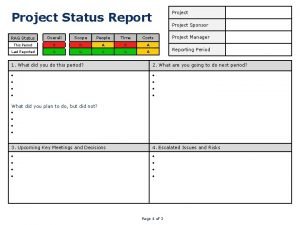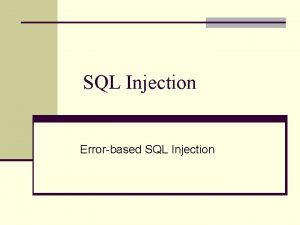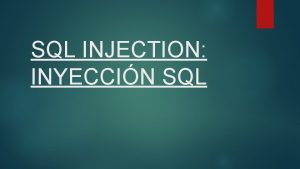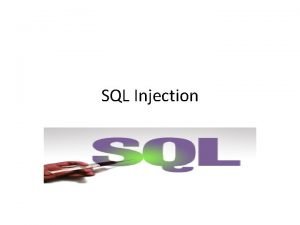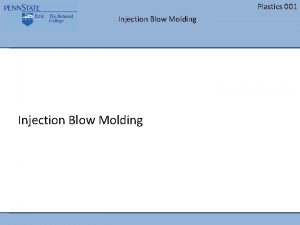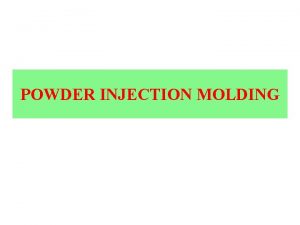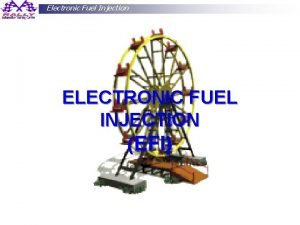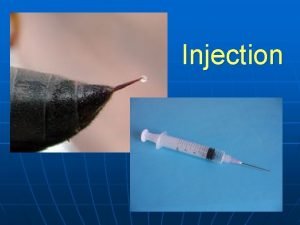Status Report Injection Working Group Working group to











- Slides: 11

Status Report – Injection Working Group Working group to find strategy for more efficient start-up of injectors and associated facilities after long stops V. Kain, B. Mikulec, members of IRWG 1

Working Group Approach – Transparency from December q Representatives from all machines around the table q Analyze commissioning and start-up after LS 1 – What worked well? And why? – Which areas need improvement? And why? q Define common approach across different machines – Learn from each other; learn from the LHC if applicable – Define how to test, what to test, when to test and who should test – Formalize testing and follow-up: check lists – E. g. : collaborative testing between equipment groups, OP and controls already before machine check-out – “Dry runs" IEFC – Injector Re-commissioning WG 2

Working Group Composition q The core: 2 members of each machine/facility (often shifters) – SPS, PSB, ISOLDE, LEIR, AD q Chair : V. Kain. Deputy: B. Mikulec q Scientific secretary: B. Lefort q Meetings in indico: https: //indico. cern. ch/category/6174/ – 6 meetings so far since end of January IEFC – Injector Re-commissioning WG 3

Status q Discussed the start-up approach, testing procedures and issues of ALL machines – also had presentation from the LHC – n. TOF and EA will be invited to participate q Many common issues found q We are in the process of establishing new approach Injector Re-commissioning WG 4

Main Common Issues q Partial test coverage; missing or incomplete check lists – Settings preparation and verification from physics to hardware parameter incomplete: optics preparation, … – Conventions not established for polarity checks – Missing references for BI systems e. g. mini scans. . – … q Testing starting too late Priority issues LHC injectors q Single expert not always available q – Holiday period q Interfaces between multiple systems not sufficiently tested – access equipment, SPS PS q Control tools’ readiness: e. g. FESA 3 – Readiness requirements need to be clearly communicated q Insufficient communication of modifications of equipment and controls to OP Injector Re-commissioning WG 5

Main proposed improvements q Preparation of check lists – Skeleton prepared by working group – Each machine prepares check list § Polarity checks will become obligatory. Convention to be established q 1 (or 2) person per machine/facility in OP responsible for machine preparation – Ensure check-lists complete – Follow-up, progress tracking – Organization of coordination meetings before test period. Communication with equipment experts for readiness, modifications, … – Organize tests q Start testing earlier – With equipment experts in dry runs: “full” vertical slices with “all” interfaces Injector Re-commissioning WG 6

Introduction of New Phase Machine responsible point of view Equipment expert point of view q Machine Preparation Beam Hardware tests Check out Access periods foreseen No access foreseen Beam Machine preparation tests coordinated by OP time – Coordination with equipment experts and MEF – Equipment experts to participate in the tests q Hardware test and accesses: coordinated by OP and MEF Injector Re-commissioning WG 7

To be answered: How to deal with modifications? q In case of introduction of “major” machine modifications during long stops – Involve machine responsible (OP/ABP) during specification phase – If possible, staged deployment of different features followed by dry runs “long before end of stop – Example: deployment of FGCs in the SPS q Introduce test mode in equipment for realistic testing without beam – Where necessary – Example: FGC simulation mode – Caution: need protect against accidently leave equipment in simulation during beam operation Injector Re-commissioning WG 8

Skeleton check list – EDMS document q q To be filled in by each machine. To be published after each re-commissioning. Work in progress Injector Re-commissioning WG 9

Skeleton check list – EDMS document Work in progress Injector Re-commissioning WG 10

Conclusion q Close to finishing analysis of start-up after LS 1 in the injector complex q Many common issues found. Résumé: direction for improvement clear q Improvements will include – Definition of “machine preparation” responsible § For communication, coordination meetings, test programme – “Complete” check lists; more tests § Learn from each other: polarity checks, test modes, … § Need to ensure that check lists stay “alive” – Start testing early § Dry runs long before machine check-out. Staged deployment of modifications followed by test of new functionality as early as possible q IRWG: very pleasant experience to see all machines working together Injector Re-commissioning WG 11

